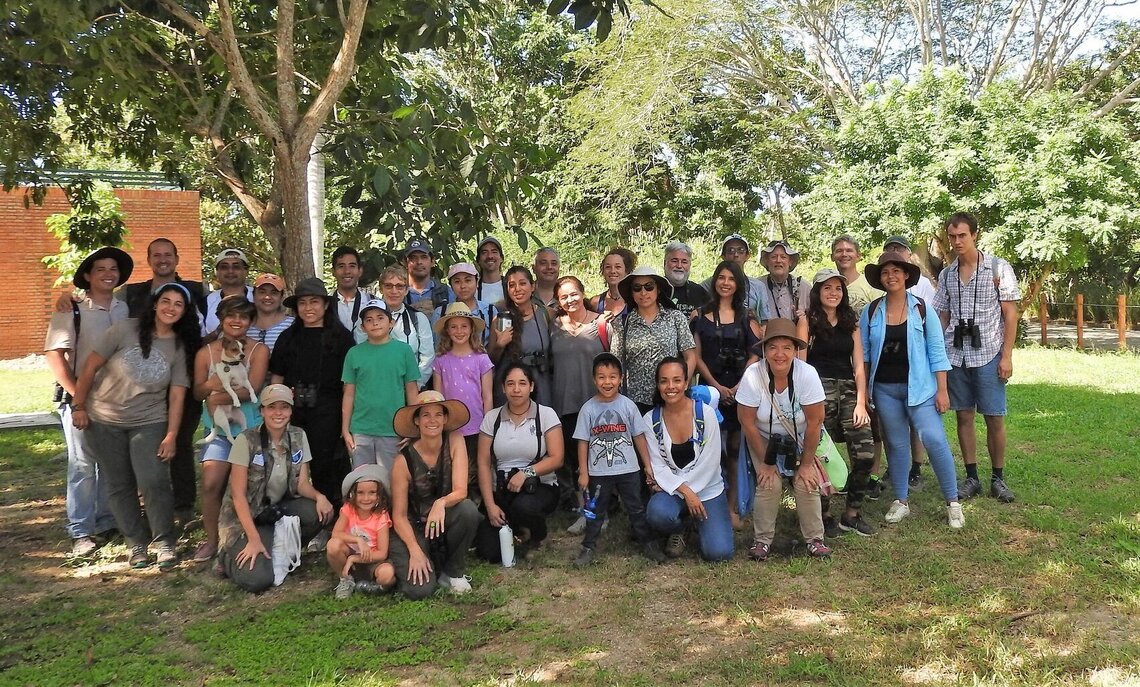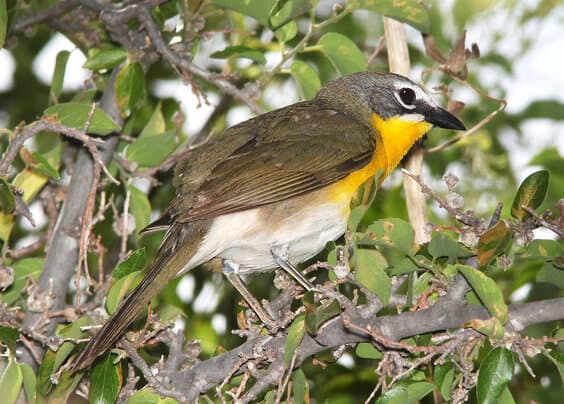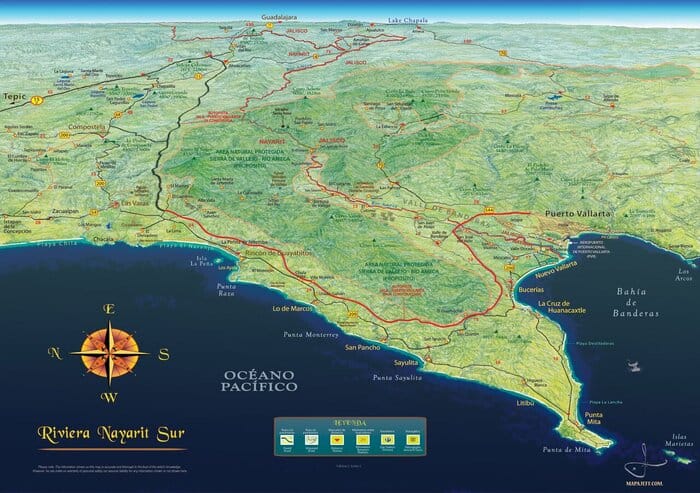
A local team gathers during the San Pancho Christmas Bird Count in 2020 (photo by San Pancho Bird Observatory).
By Luis E. Morales, Executive Director, Center for Conservation Studies, San Pancho Bird Observatory
Birds connect our world, and they provide important ecological values that are indispensable for ecosystem functioning. Wild birds also have an enormous aesthetical value that provides the opportunity of engaging human communities in recreational, educational, economic, and nature conservation activities.
Bird diversity is particularly high at the Banderas Bay region of Mexico located along the Pacific coast between the states of Nayarit and Jalisco within the Terrestrial Priority Region 062 Rio Ameca-Sierra de Vallejo. A recent study shows the area is becoming an increasingly popular birding hotspot amongst both domestic and international tourist markets, associated to the rapid expansion of the tourism industry in Puerto Vallarta and the Riviera Nayarit.
During the last decade, the Banderas Bay region and particularly a small village called of San Francisco (better known as San Pancho), located about 45 km north of Puerto Vallarta, has made significant advances in the implementation of a bird conservation strategy associated with collaborative efforts between multiple local and international partners in the public, private, academic, and social sectors.
The conservation efforts began with the San Pancho Birding Club (2007- 2009), an educational project funded by the private sector in collaboration with local schools. The club was the seed for a gradual shift in the local community`s mindset from predation to conservation; specifically changing the habits of using wild birds for food or the pet trade. The birding club was also the foundation for a local birdwatching company, Birding San Pancho, to begin offering birding tours in the region in 2010.
Birdwatchers visiting during 2011 helped connect Birding San Pancho with Partners in Flight (PIF) through the Klamath Bird Observatory (KBO) based in Oregon, USA. The idea of the San Pancho Bird Observatory (SPBO) emerged as an attempt to develop and deliver a bird conservation model that could help advance bird and habitat conservation while increasing the environmental and social responsibility of the expanding birdwatching industry, and ultimately the entire tourism sector in the region.

Research by San Pancho Bird Observatory biologists has led to a greater understanding of the migratory connectivity of the Yellow-breasted Chat (photo by Alan Schmierer).
During 2012, KBO provided an internship opportunity to the founding member of Birding San Pancho and SPBO at their bird banding program, which was supported by the US Forest Service International Program. The internship included attendance to the North American Ornithological Conference in Vancouver, Canada, which resulted in the first stages of collaboration with Environment and Climate Change Canada and the Universidad de Guadalajara CUCSUR to advance the understanding of the migratory connectivity of the Yellow-breasted Chat (Icteria virens), a migratory bird species that is a conservation priority for Canada, the mascot logo of KBO, and a common visitor at the Banderas Bay region during the winter.
SPBO was formalized as a non-profit organization in 2014. Its bird conservation model consists of integrating: (1) environmental education and capacity building with (2) community development opportunities through birdwatching tourism, and (3) using scientific knowledge of bird populations to (4) inform decision makers about better management practices for habitat protection of migratory and priority resident bird species.
During the following years, a symbiosis between Birding San Pancho and SPBO continued as the birding company became a role model of sustainability, and birdwatchers became a valuable source of support to the non-profit organization. Also, the birdwatching industry grew considerably in the region which allowed Birding San Pancho to help SPBO deliver a conservation strategy resulting in thousands of local children able to participate in birdwatching activities, dozens of adults trained in nature-tourism guiding, and hosting multiple festivals and other community outreach events aimed to integrate people, businesses, academic and governmental institutions in a common vision for bird and nature conservation.
Such multi-sectorial collaborations expanded organically allowing SPBO to conduct and participate in scientific research projects and monitoring bird populations. This helped increase the body of knowledge on migratory and resident bird species, and advance habitat conservation of hundreds of hectares in multiple private and public natural sites.
The bird conservation model developed and delivered by SPBO over the last decade at the Banderas Bay region demonstrates that birds do connect our world and that birdwatching can be a significant force to advance biodiversity conservation while promoting the sustainable economic development of local communities.


 English
English  Español
Español 